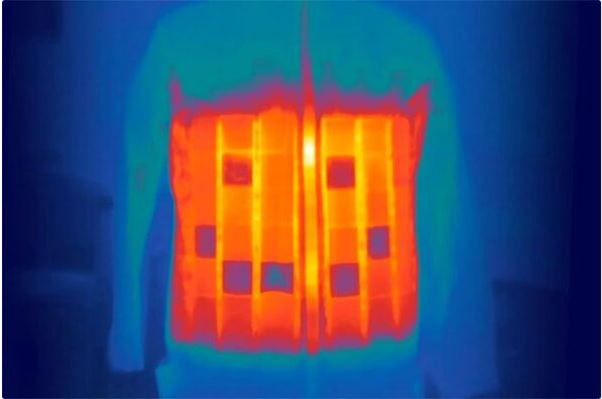The new fabric can reduce noise in two ways, eliminating direct sound by emitting opposing sound waves or blocking sound transmission.
A group of experts at the Massachusetts Institute of Technology (MIT), USA, and a number of other research institutes developed a fabric nearly as thin as a human hair to significantly reduce noise, Interesting Engineering reported on May 7. This material contains a special fiber that can vibrate when voltage is applied. The research team took advantage of this vibration to cancel sound in two different modes.
First, the vibrating fabric emits sound waves that block unwanted noise, similar to noise-canceling headphones. Specifically, to eliminate direct sound, the research team built a fabric speaker. They use it to emit sound waves that oppose unwanted sound waves transmitted to the fabric, thereby eliminating noise. However, this mode is only effective in small spaces like the human ear, not effective in large spaces like rooms or airplanes.
The second mode is to hold the fabric still to eliminate vibrations, which are a key factor in sound transmission. Suppose the neighbors who live in the apartment next door play soccer at midnight. People who are sleeping will hear noise because the sound in the apartment next door causes the common wall to vibrate, creating sound waves on this side.
To eliminate that sound, the team can cover the common wall on the sleeping person’s side with a new fabric, controlling the vibrations in the special fibers to force the fabric to stay still. This indirect vibration suppression prevents sound from transmitting through the fabric, helping to reduce noise in large spaces such as rooms or cars.
In the new study, a group of scientists studied common materials such as silk, canvas, and muslin to create a noise-proof fabric that can be used practically. Their experiments revealed that the mechanical properties and size of the fabric’s pores affect the efficiency of sound production. Although silk and muslin have similar mechanical properties, silk has smaller pores, making it a better fabric speaker. But the effectiveness of the hole size also depends on the frequency of the sound wave. If the frequency is low enough, even fabrics with relatively large holes can work effectively.
When testing the new fabric in direct cancellation mode, the team found it could reduce noise by up to 65 decibels (as loud as a lively conversation). In indirect vibration suppression mode, the fabric can reduce sound transmission by up to 75%.
In the future, the research team wants to learn how to use the new fabric to block multi-frequency sounds. This will likely require complex signal processing and additional electronics. Additionally, they want to further research the fabric structure to improve performance.
“In a world where noise seems to overwhelm silence, our goal is to create silence, a commodity more precious than gold. By harnessing the power of fabric vibrations, we “I have opened up new possibilities for establishing quiet spaces,” said Grace Yang, lead author of the study and expert at MIT.











